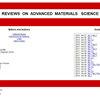锈蚀钢筋混凝土中长柱轴向受压行为退化的有限元分析
IF 3.6
4区 材料科学
Q2 MATERIALS SCIENCE, MULTIDISCIPLINARY
引用次数: 0
摘要
沿海地区钢筋混凝土(SRC)柱的腐蚀问题日益严重,亟待解决。本研究建立了考虑腐蚀效应的钢筋混凝土中长柱数值分析模型。建立了锈蚀钢筋与混凝土之间的粘结-滑移构成关系。研究发现,当锈蚀率较低时,SRC 柱的粘结应力比未锈蚀时略有增加。当锈蚀率超过 1.5% 时,极限粘结应力和残余粘结应力将显著下降。数值分析模型与实验结果的对比表明,模型的建立是合理的。随后的参数分析表明,对于锈蚀的 SRC 中长柱,构件的细长比越大,轴向压缩性能下降越快。锈蚀率从 0 增加到 30%,SRC 柱的轴向压缩性能明显下降。当锈蚀率超过 30% 时,混凝土柱的轴向压缩性能趋于稳定。提出了一种考虑锈蚀效应的 SRC 中长柱极限承载力计算公式。本文章由计算机程序翻译,如有差异,请以英文原文为准。
Finite element analysis of deterioration of axial compression behavior of corroded steel-reinforced concrete middle-length columns
The corrosion problem of steel-reinforced concrete (SRC) columns in coastal areas is becoming increasingly severe and needs to be solved urgently. This study established a numerical analysis model for SRC middle-length columns considering corrosion effects. The bond–slip constitutive relationship between corroded steel and concrete was established. It was found that when the rust rate is low, the bonding stress of SRC columns is slightly increased compared to those without corrosion. The ultimate and residual bonding stress will decrease significantly when the rust rate exceeds 1.5%. The comparison between the numerical analysis model and the experimental results shows that the establishment of the model is reasonable. Subsequent parameter analysis showed that for corroded SRC mid-length columns, the larger the slenderness ratio of the component, the faster the decrease in axial compression performance. The rust rate increased from 0 to 30%, and the axial compression performance of SRC columns decreased significantly. When the rust rate exceeded 30%, the axial compression performance of concrete columns tended to stabilize. A formula for calculating SRC middle-length columns’ ultimate bearing capacity considering corrosion effects has been proposed.
求助全文
通过发布文献求助,成功后即可免费获取论文全文。
去求助
来源期刊

Reviews on Advanced Materials Science
工程技术-材料科学:综合
CiteScore
5.10
自引率
11.10%
发文量
43
审稿时长
3.5 months
期刊介绍:
Reviews on Advanced Materials Science is a fully peer-reviewed, open access, electronic journal that publishes significant, original and relevant works in the area of theoretical and experimental studies of advanced materials. The journal provides the readers with free, instant, and permanent access to all content worldwide; and the authors with extensive promotion of published articles, long-time preservation, language-correction services, no space constraints and immediate publication.
Reviews on Advanced Materials Science is listed inter alia by Clarivate Analytics (formerly Thomson Reuters) - Current Contents/Physical, Chemical, and Earth Sciences (CC/PC&ES), JCR and SCIE. Our standard policy requires each paper to be reviewed by at least two Referees and the peer-review process is single-blind.
 求助内容:
求助内容: 应助结果提醒方式:
应助结果提醒方式:


